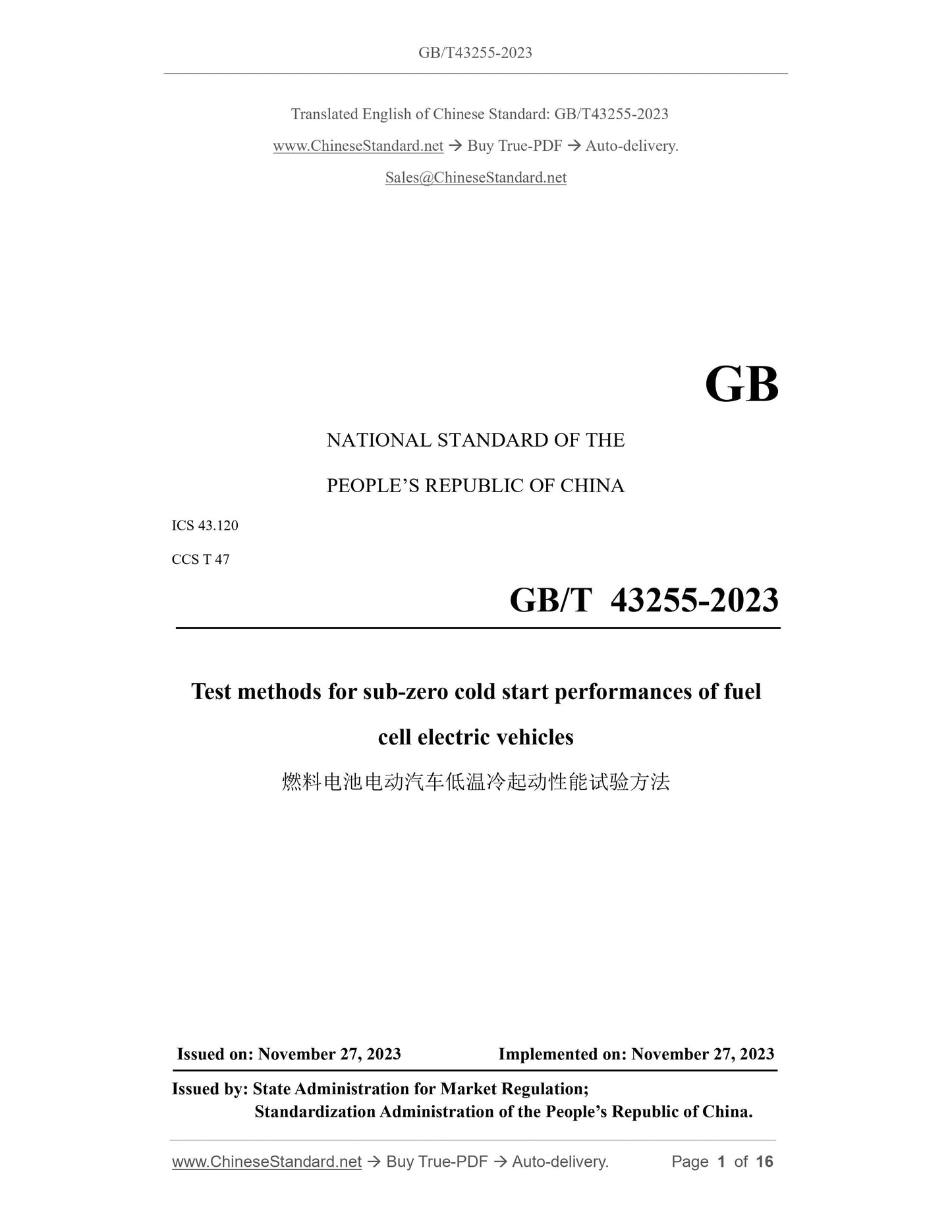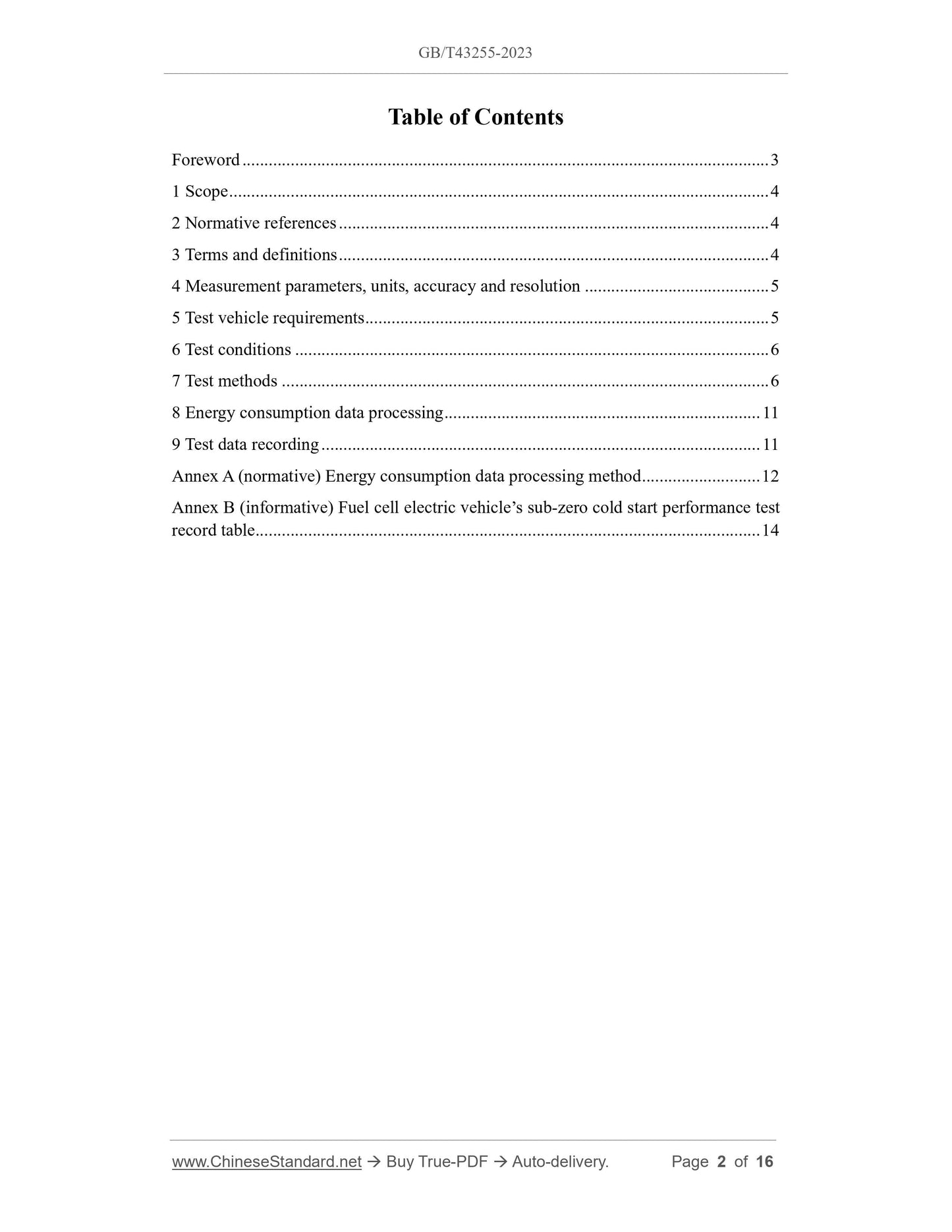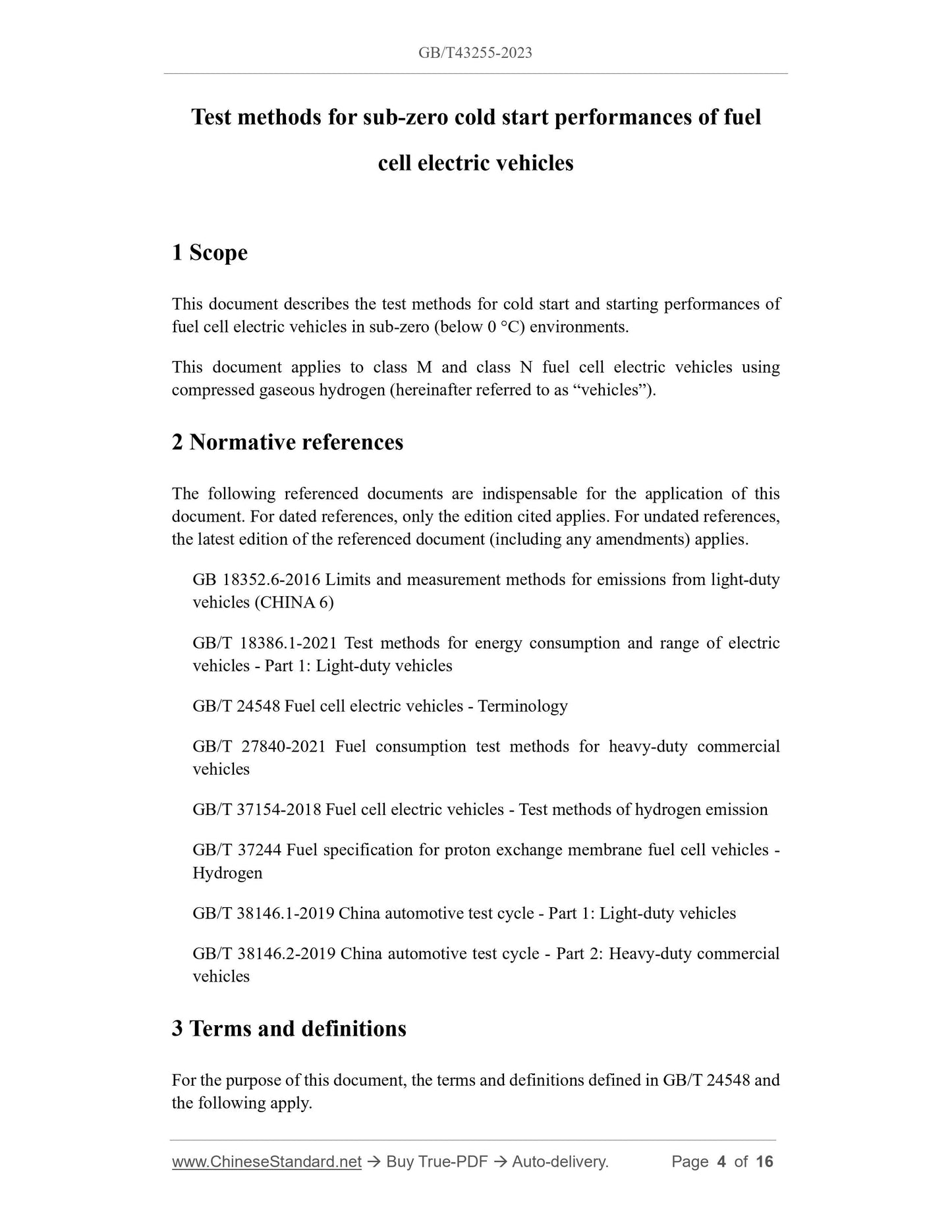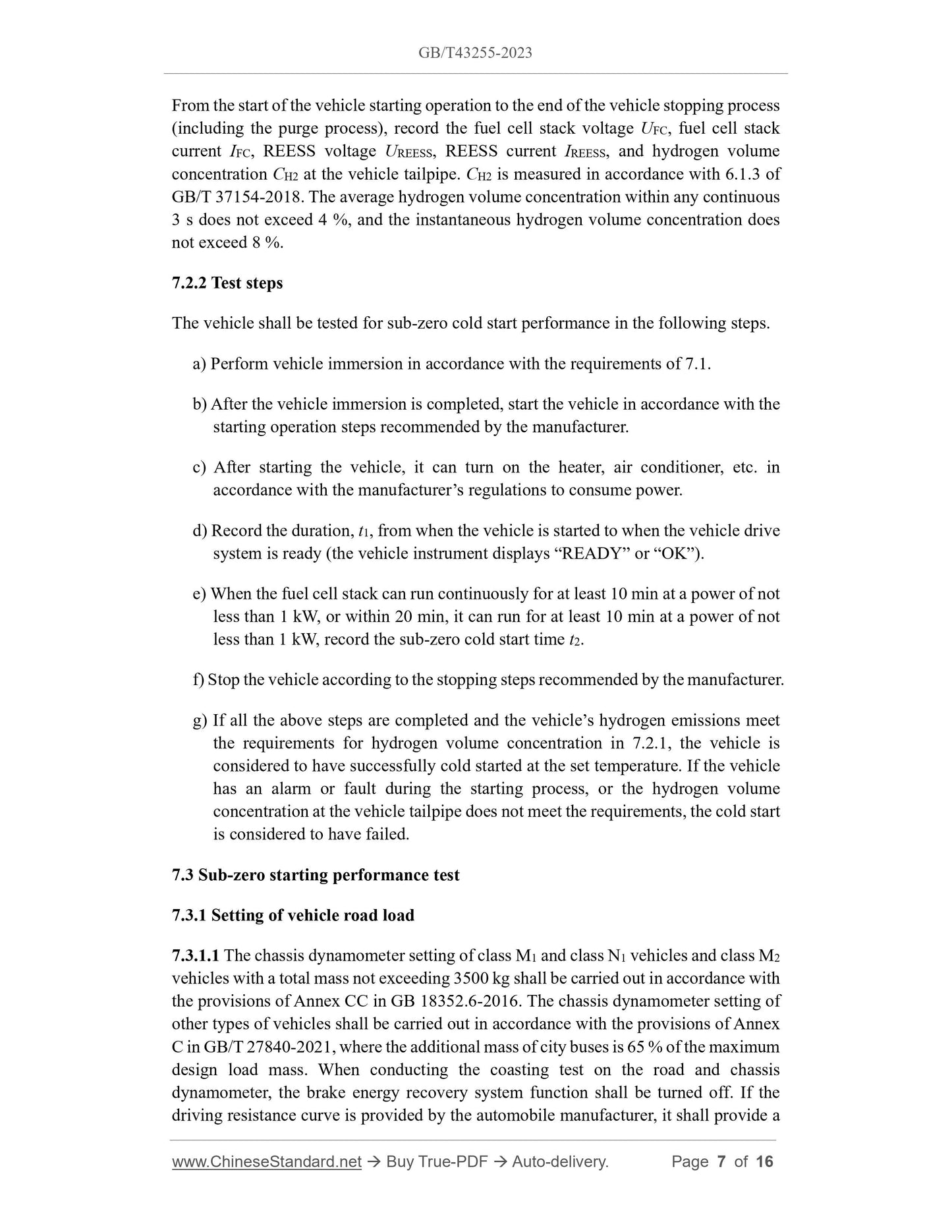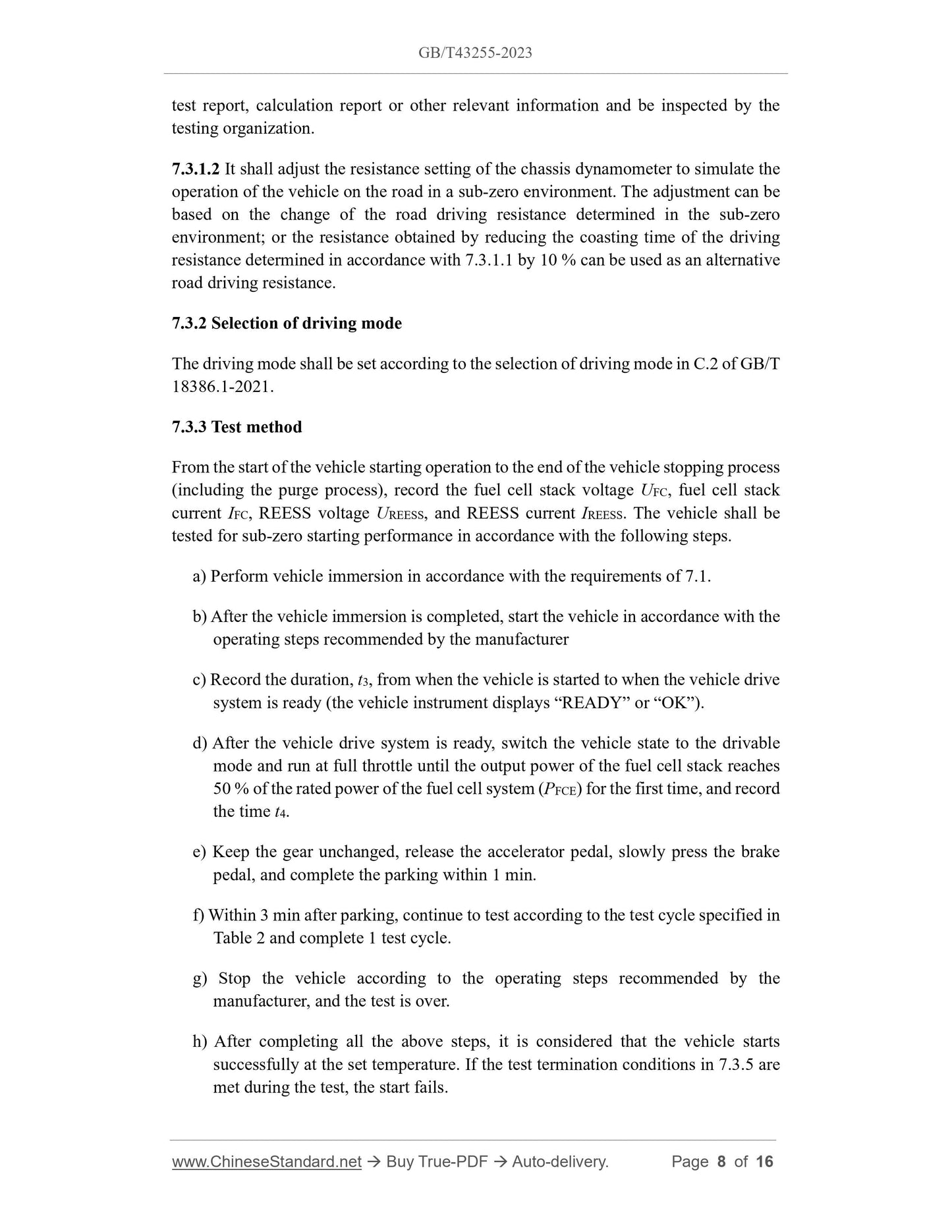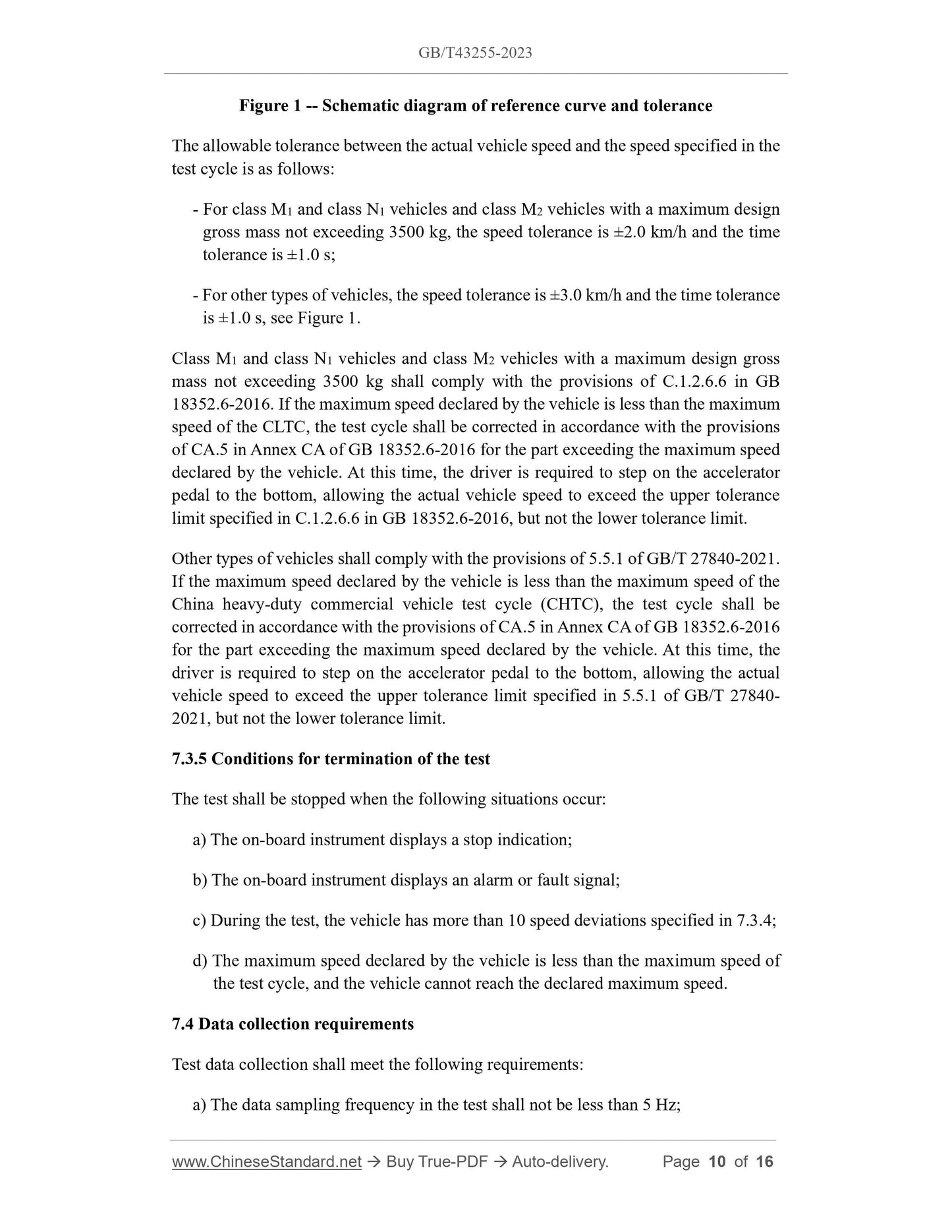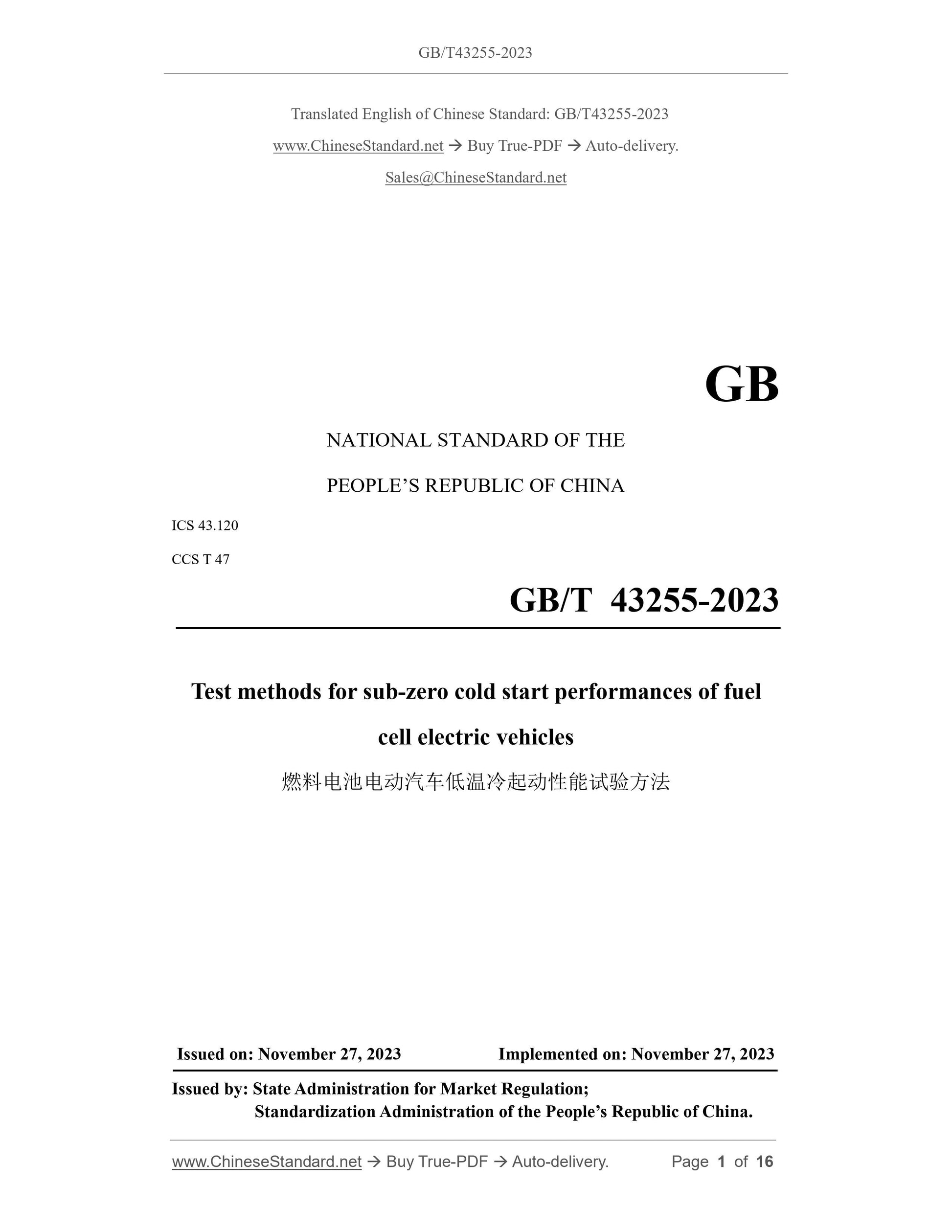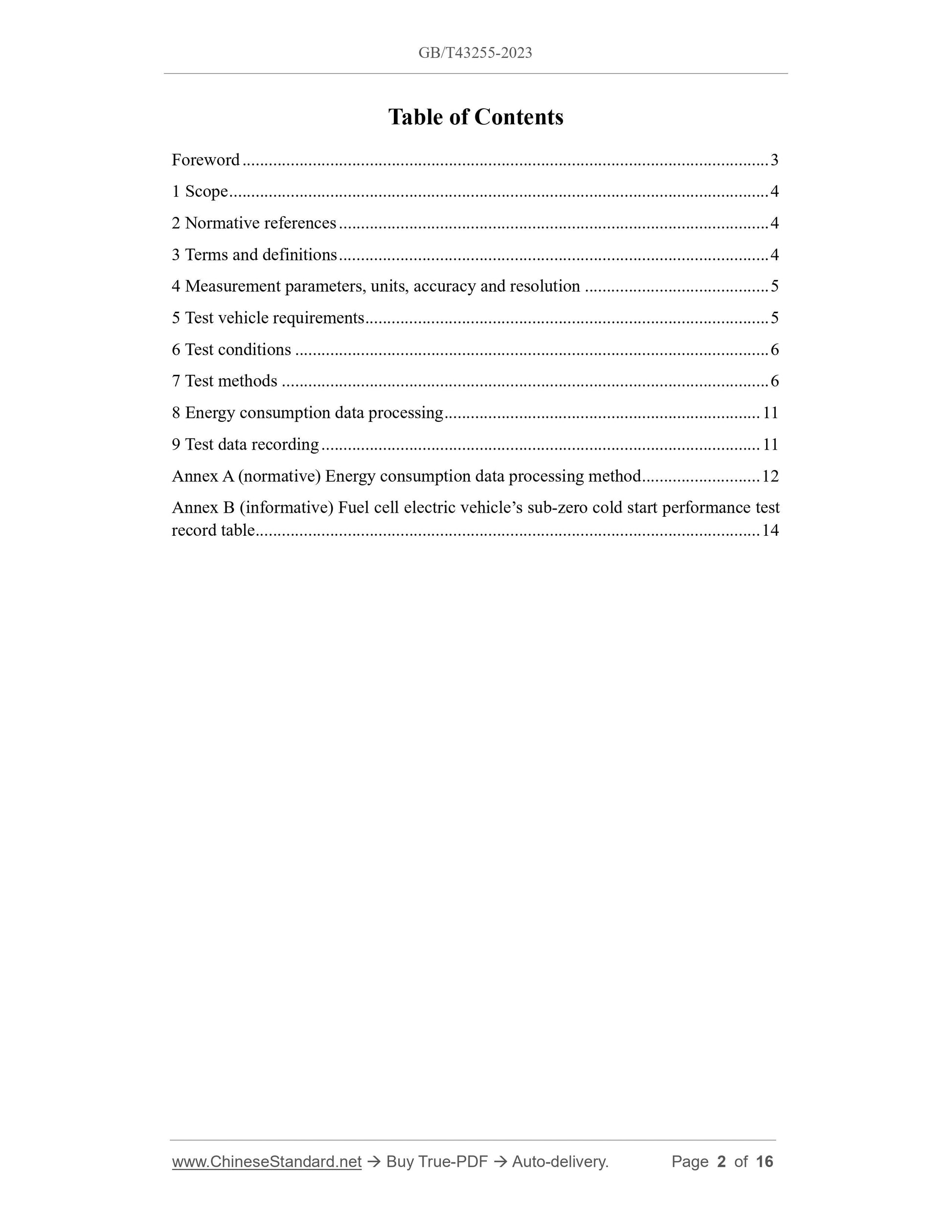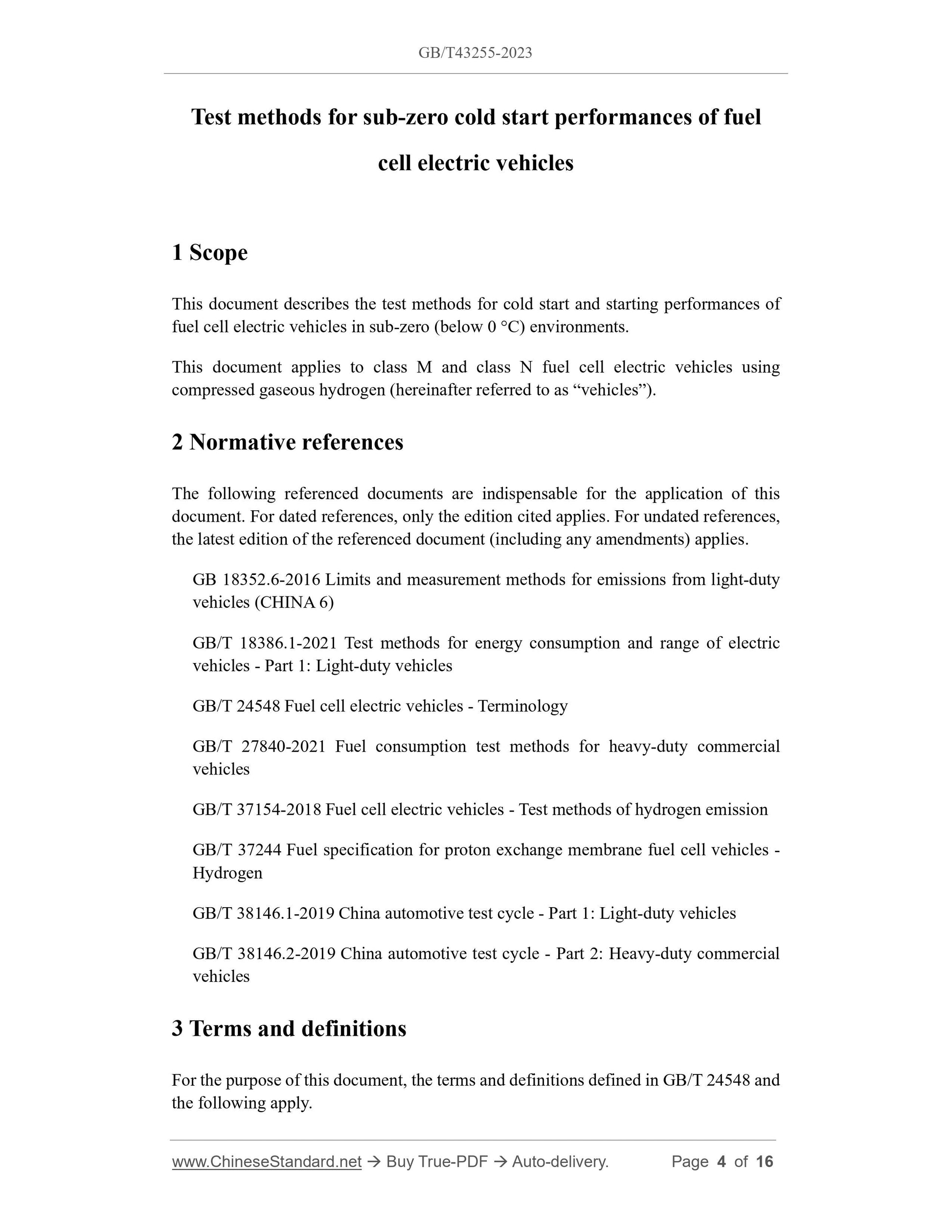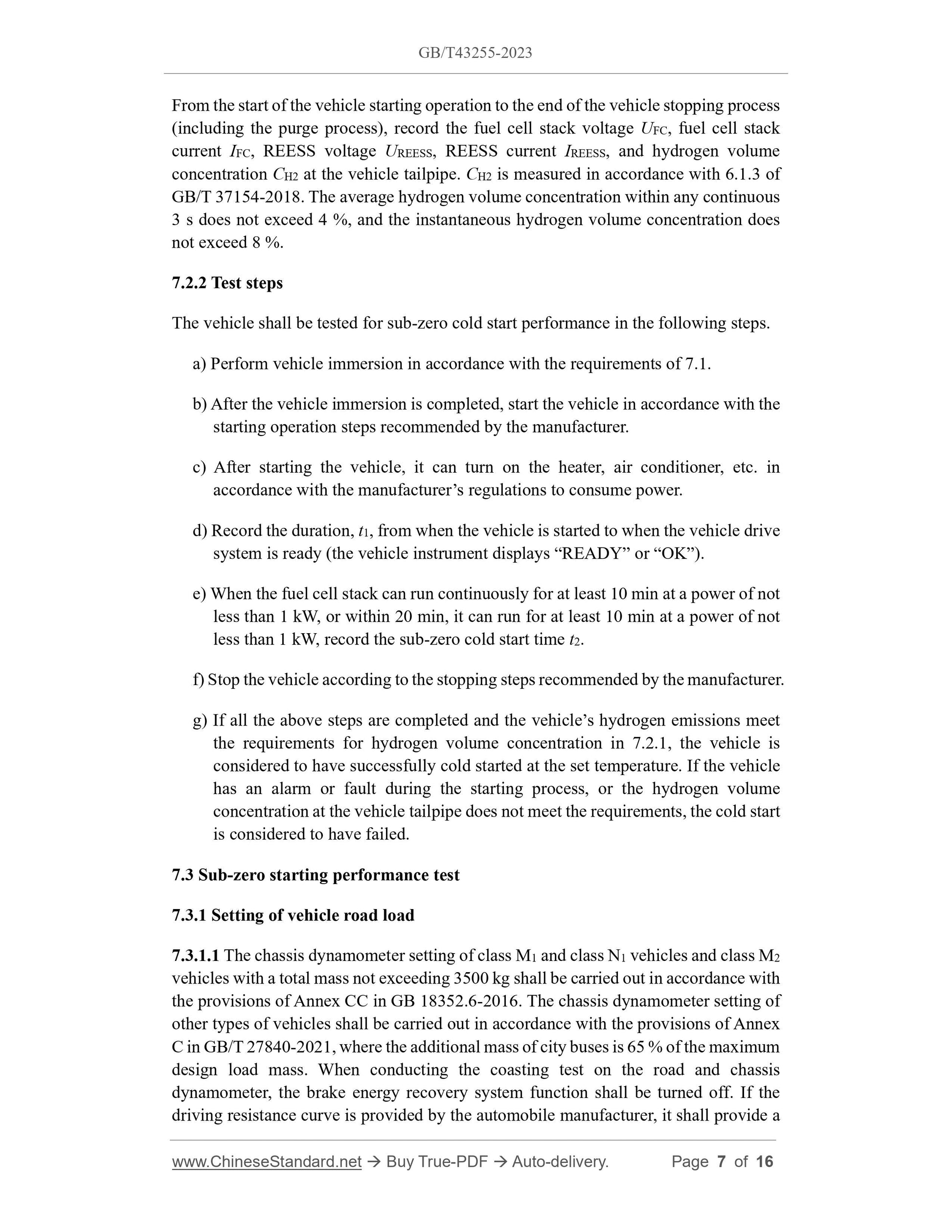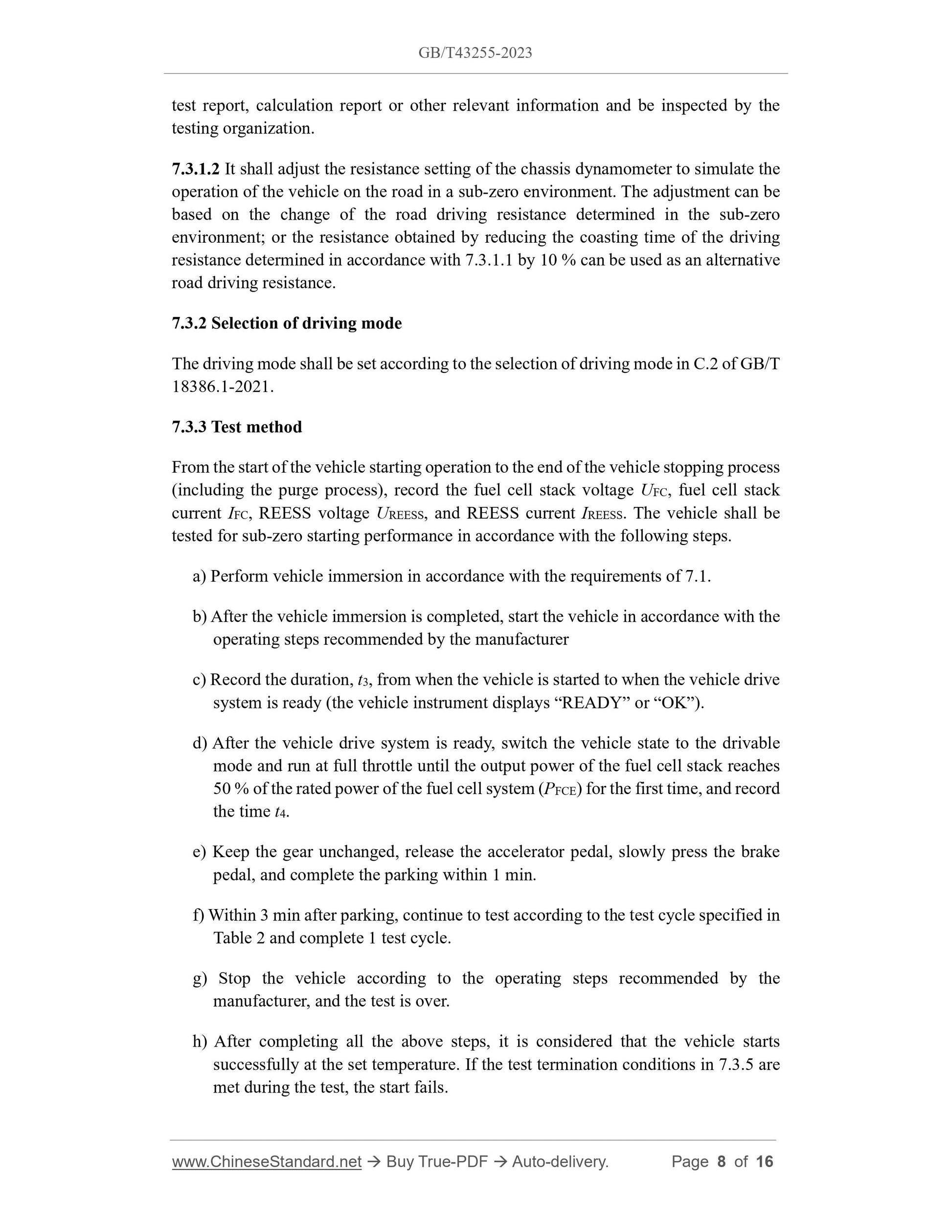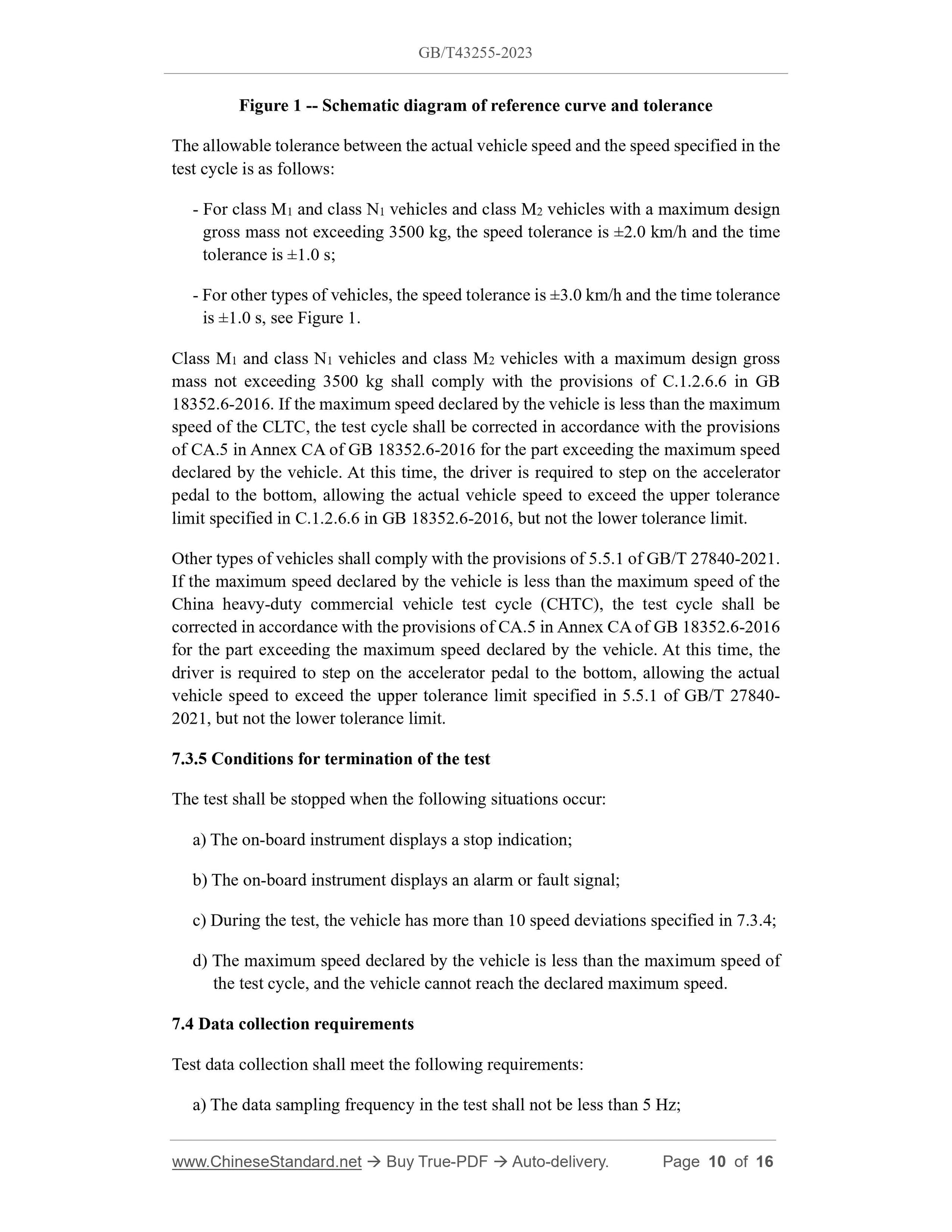1
/
of
6
www.ChineseStandard.us -- Field Test Asia Pte. Ltd.
GB/T 43255-2023 English PDF (GB/T43255-2023)
GB/T 43255-2023 English PDF (GB/T43255-2023)
Regular price
$260.00
Regular price
Sale price
$260.00
Unit price
/
per
Shipping calculated at checkout.
Couldn't load pickup availability
GB/T 43255-2023: Test methods for sub-zero cold start performances of fuel cell electric vehicles
Delivery: 9 seconds. Download (and Email) true-PDF + Invoice.Get Quotation: Click GB/T 43255-2023 (Self-service in 1-minute)
Newer / historical versions: GB/T 43255-2023
Preview True-PDF
Scope
This document describes the test methods for cold start and starting performances offuel cell electric vehicles in sub-zero (below 0 °C) environments.
This document applies to class M and class N fuel cell electric vehicles using
compressed gaseous hydrogen (hereinafter referred to as “vehicles”).
Basic Data
| Standard ID | GB/T 43255-2023 (GB/T43255-2023) |
| Description (Translated English) | Test methods for sub-zero cold start performances of fuel cell electric vehicles |
| Sector / Industry | National Standard (Recommended) |
| Classification of Chinese Standard | T47 |
| Classification of International Standard | 43.120 |
| Word Count Estimation | 13,121 |
| Date of Issue | 2023-11-27 |
| Date of Implementation | 2023-11-27 |
| Issuing agency(ies) | State Administration for Market Regulation, China National Standardization Administration |
Share
